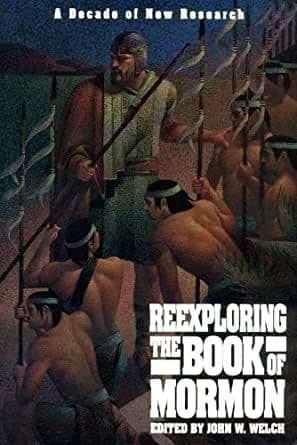Book
85 Chapters

2 Nephi 27:6 “The Lord God shall bring forth unto you the words of a book.”
In 1834, Professor Charles Anthon vehemently denied that he told Martin Harris that the Book of Mormon characters resembled Egyptian. A different story, of course, is found in the Pearl of Great Price (Joseph Smith—History 1:63-65). Who is telling the truth?
According to Martin Harris, Joseph Smith copied some of the Book of Mormon characters and Martin took them to New York. There he met with Charles Anthon, who certified to him that they were correct. Completely reassured, Harris returned to Harmony, told his friends about it, and later mortgaged his property to finance the publication of the Book of Mormon. This is very early concrete evidence that Martin Harris’s version of his meeting with Anthon is accurate and that Anthon’s later retraction was an attempt to save face, if not an act of downright dishonesty.
Shortly afterwards, in 1831 W. W. Phelps wrote a letter in which he reported that Anthon had translated the Book of Mormon characters and declared them to be “the ancient shorthand Egyptian.”This is a most telling clue, for where else, except from Anthon, would Harris and hence Phelps have gotten this precise phrase, the phrase shorthand Egyptian? It was not part of Harris’s environment or education.1 Indeed, the phrase is so singular that it appears only this one time in LDS history.
On the other hand, this precise term was known to scholars, Anthon included. In 1824, Champollion had used an equivalent term, “tachygraphie,” in his landmark Préçis du système hieroglyphique des anciens Égyptiens (a copy of which Anthon owned),2 to describe hieratic Egyptian script. In June 1827, this book was reviewed in the American Quarterly Review, calling hieratic Egyptian script “short-hand” Egyptian.3 Anthon knew this review: He owned a copy and he cited it in his Classical Dictionary.4Anthon would have read this review only months before Harris’s visit.
Thus it becomes highly probable that Phelps indeed heard this peculiar phrase from Harris, who in turn got it from Anthon, the only person involved who was likely to have known it. Anthon probably mentioned shorthand Egyptian because he was struck by certain obvious similarities in the transcript to hieratic or demotic Egyptian. From this, what else can one conclude, except that Harris told the truth about what Anthon said on this point?
Anthon’s side of the story breaks down in other ways, as has long been pointed out. For example, on whether he gave Harris a written statement: Anthon’s 1834 letter to Eber D. Howe says that he did not, while his 1841 letter to T. W. Coit says that he did. On how convincing he had been, Anthon’s 1834 letter simply says that Harris “took his leave,” but his 1841 letter claims that Harris left with the “express declaration” that he would not mortgage his farm or have anything to do with printing the golden book.5 In fact, in light of Harris’s subsequent conduct (which was totally supportive of Joseph Smith and the Book of Mormon), Harris clearly left Anthon fully satisfied.
Moreover, a motive for Anthon’s 1834 and 1841 behavior is not hard to find. Protecting his prestigious standing among his peers must have been Anthon’s primary concern. It turned out to be a professional liability for Anthon to have been linked with the Mormons and with Smith’s notorious “roguery”—as Anthon termed it. In 1868 (some forty years later!), in a Commemorative Address,Anthon’s successor at Columbia College still spoke about the Harris-Anthon affair and admitted that it was a real threat to Anthon’s reputation.
Caught on the horns of a dilemma, and having unwittingly fulfilled the prophecy of Isaiah 29, Anthon took the easy way out: He tore up the statement he had innocently given to Harris and denied Harris’s story. Today Anthon’s cover-up appears more blatant than ever.6
Based on research by Robert F. Smith, Gordon C. Thomasson, and John W. Welch, originally published May 1985 and revised 1990. Although the focus of this research has shifted to the evidence given by W. W. Phelps, now that the Salamander Letter is known to have been a forgery, the likelihood that Anthon was the source of the phrase “reformed Egyptian” or “shorthand Egyptian” remains a strong corroboration of Martin Harris’s understanding of Anthon’s original intent. For a recent restating of this historical information, see “Martin Harris’s Visit with Charles Anthon: Collected Documents on Short-hand Egyptian” (Provo: F.A.R.M.S., 1990).
1. See Gordon Thomasson, “Daddy, What’s a Frontier?” in Book of Mormon Symposium, BYU, Provo, 1970.
2. Jean-François Champollion, Préçis du système hieroglyphique des anciens Égyptiens, 2 vols. (Paris, 1824, 1827-28), 2:18, 20, 355.
3. American Quarterly Review 1, no. 2 (June 1827): 450.
4. Charles Anthon, Classical Dictionary, 4th ed. (New York: Harper, 1845), 45.
5. See B. H. Roberts, Comprehensive History of the Church, 1:102-8; Richard Bushman, Joseph Smith and the Beginning of Mormonism (Urbana: University of Illinois, 1984), 87-88.
6. For further enlightening details, see Stanley B. Kimball, “The Anthon Transcript: People, Primary Sources, and Problems,” BYU Studies 10 (1970): 325-52. Available as a F.A.R.M.S. reprint- revised June 1985.
Book
85 Chapters
Items in the BMC Archive are made publicly available for non-commercial, private use. Inclusion within the BMC Archive does not imply endorsement. Items do not represent the official views of The Church of Jesus Christ of Latter-day Saints or of Book of Mormon Central.